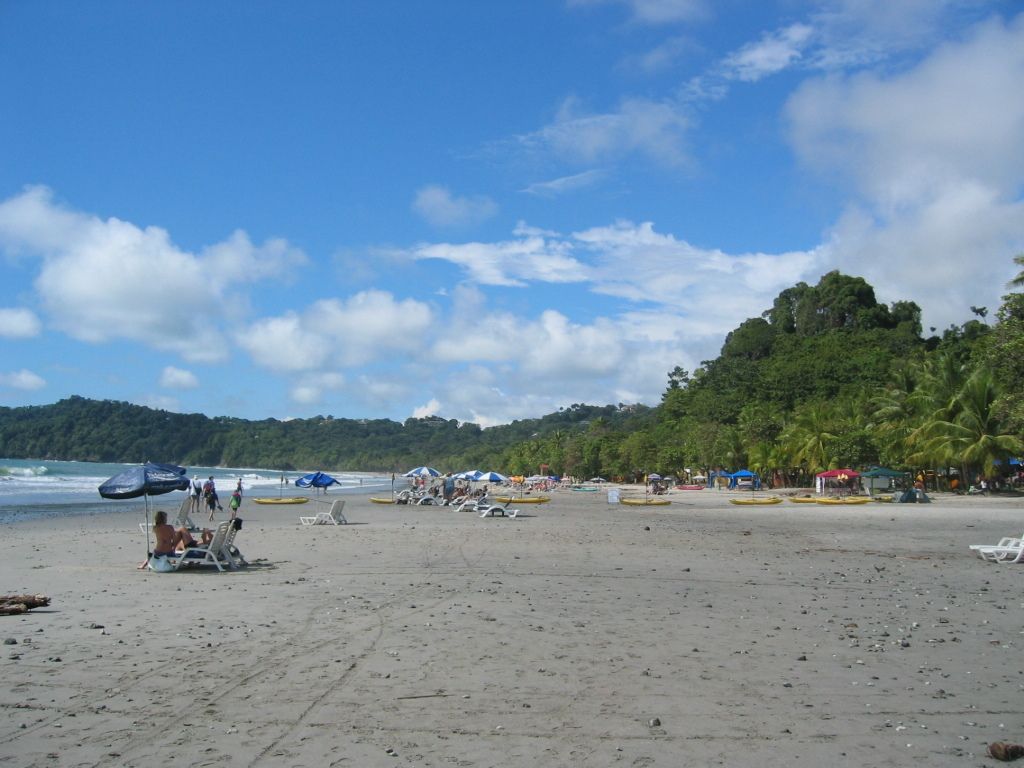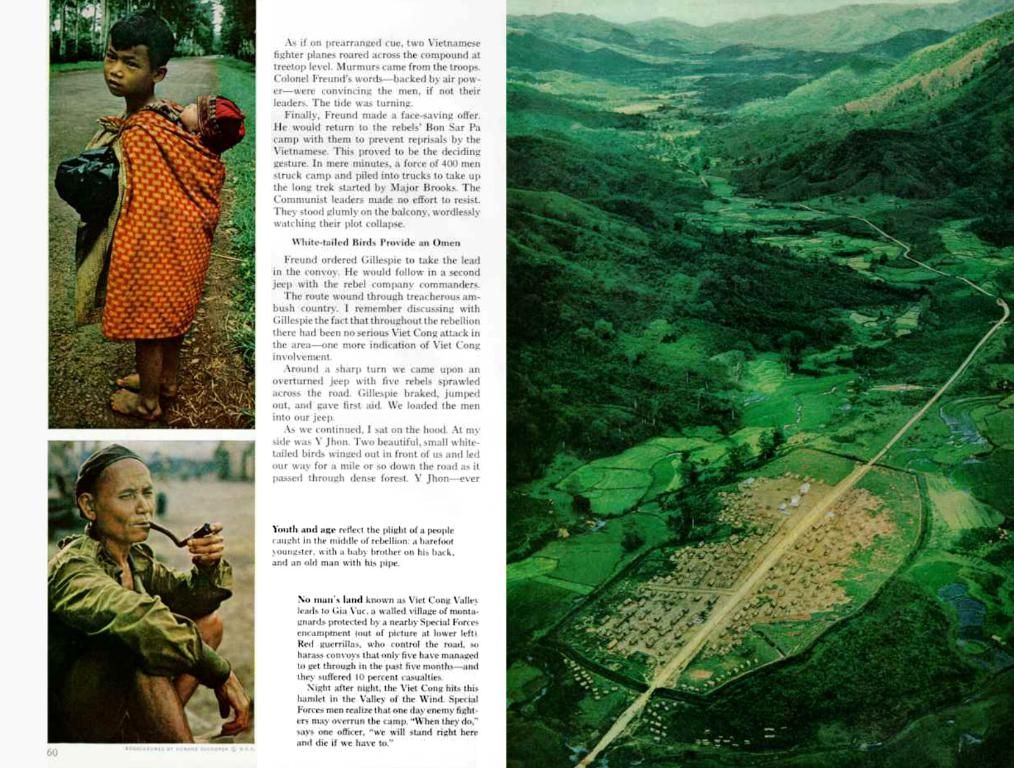Water Woes and Solutions: The Central Asian Dilemma
Time pressure looms as Central Asia faces water catastrophe: Perspective
The future of water in Central Asia is a pressing issue, and the statistics tell a bleak story.
These five nations together use around 127 billion cubic meters of water annually, with a staggering 80%—that's 100 billion cubic meters—going to agriculture. However, only half of the water allocated for agricultural use is effectively utilized, with the rest being lost due to inadequate irrigation facilities and wasteful practices. This terrible water use efficiency indicator, eight times lower than the global average, has far-reaching consequences.
Approximately 22 million of the region's 79 million people lack access to clean water. This means that for every ten Central Asians, three struggle daily to find a safe drink. If action isn't taken, this number can only grow worse.
By 2050, the region's population is projected to grow to 90-110 million. Urbanization, climate change, droughts, and increased food production will intensify the strain on scarce water resources. A swift shift towards the rational use of shared water resources, based on sustainability, equity, and cooperation, is essential.
This year, Kazakhstan has taken the reins as chair of the International Fund for Saving the Aral Sea (IFAS) for a three-year term. To breathe new life into this enterprise, Kazakh officials have declared their intentions.
One promising idea on the table is the establishment of a Central Asian Water and Energy Consortium (CAWEC), with equal participation from all regional states. Over time, this consortium could foster a balance between the interests of upper and lower states. Upper states, like Kyrgyzstan and Tajikistan, desire to construct large hydroelectric power plants, while lower states, like Uzbekistan, Turkmenistan, and Kazakhstan, have concerns about potential water charges.
Another critical player in the region is Afghanistan. Its role in water management cannot be ignored, given its reliance on the same water resources as the Central Asian nations. Failure to include Afghanistan in discussions surrounding water management brings deep risks.
In 2022, the Taliban-led government began work on the Kosh-Tepa Canal, a 285-kilometer irrigation project that could potentially divert up to 20% of the Amu Darya's water. If completed, this project could cause tensions between Central Asian countries and Afghanistan.
To ensure sustainable management of the entire basin, Afghanistan's practical involvement in water management processes is indispensable.
Lastly, it's high time Central Asia embraced modern technology, digitalization, and green investments in the water sector. This may be costly, but the benefits—including less pollution, higher productivity, and increased wealth—make it a worthwhile investment.
The Global Commission on Adaptation projects that if Central Asian countries fail to address the water crisis by 2050, there could be a disastrous 7-12% decrease in gross domestic product (GDP).
By taking action now, Central Asia can secure its water future and foster greater regional cooperation.
Regional Water-Sharing Frameworks
- Syr Darya and Amu Darya Framework: Recently agreed upon by the Central Asian nations, this framework seeks to share water resources equitably and efficiently between the states.
- Bahri Tojik Reservoir Agreement: This agreement between Kazakhstan, Tajikistan, and Uzbekistan allots water from the Bahri Tojik reservoir for summer crop irrigation, demonstrating a willingness to collaborate on water management.
Enhanced Regional Cooperation
- CAWLN Programme: Backed by the FAO and GEF, this programme aims to stimulate regional cooperation on water and land management, ultimately improving water security, agricultural land health, and rural economies.
- ICWC and Water Diplomacy: Strengthening the Interstate Commission for Water Coordination (ICWC) and expanding its mandate to include energy issues could boost water diplomacy, fostering cooperation and addressing political tensions over shared resources.
Border Demarcation Agreements
- Kyrgyzstan-Tajikistan-Uzbekistan Agreement: The recent border agreement among these countries could pave the way for trilateral cooperation on water and energy issues, potentially stabilizing the region and enhancing economic integration.
Impact on Water Resources
- Improved Equity and Efficiency: New water-sharing agreements and frameworks can help ensure more equitable distribution of water resources and enhance the efficiency of water use.
- Climate Resilience: By focusing on climate sensitivity in water management, initiatives like the CAWLN programme aim to help Central Asia adapt to changing climate patterns, securing its water resources for future generations.
Impact on Economic Growth
- Agricultural Productivity: Efficient water use can boost agricultural productivity, contributing to economic growth by increasing crop yields and improving agricultural export potential.
- Regional Integration: Enhanced cooperation could lead to increased economic integration, as countries work together on common issues, fostering trade and investment opportunities across the region.
Impact on Political Dynamics
- Reduced Tensions: Cooperation on water management can help reduce political tensions among Central Asian states, making shared resources a less contentious issue.
- Strengthened Diplomacy: Successful collaborative water management can set a precedent for cooperation on other regional issues, strengthening overall political stability and fostering a culture of problem-solving and collaboration in the region.
- To combat the water crisis in Central Asia, a shift towards efficient water use based on sustainability, equity, and cooperation is crucial, as regional climate change, urbanization, and increased food production intensify the strain on scarce water resources.
- The Global Commission on Adaptation projects that if Central Asian countries fail to address the water crisis by 2050, there could be a disastrous 7-12% decrease in gross domestic product (GDP), underscoring the importance of taking action now to secure the region's water future.
- Enhanced regional cooperation, such as the CAWLN programme, can stimulate collaboration on water and land management, ultimately improving water security, agricultural land health, and rural economies, while also helping reduce political tensions among Central Asian states.
- Establishing regional water-sharing frameworks, like the Syr Darya and Amu Darya Framework, promotes equitable distribution of water resources and enhances the efficiency of water use, while also boosting agricultural productivity and contributing to economic growth through increased crop yields and improved agricultural export potential.








